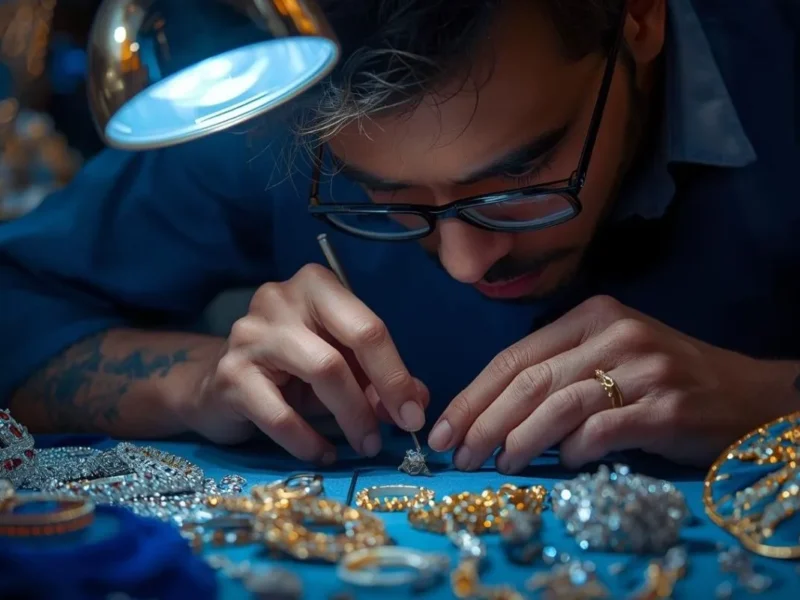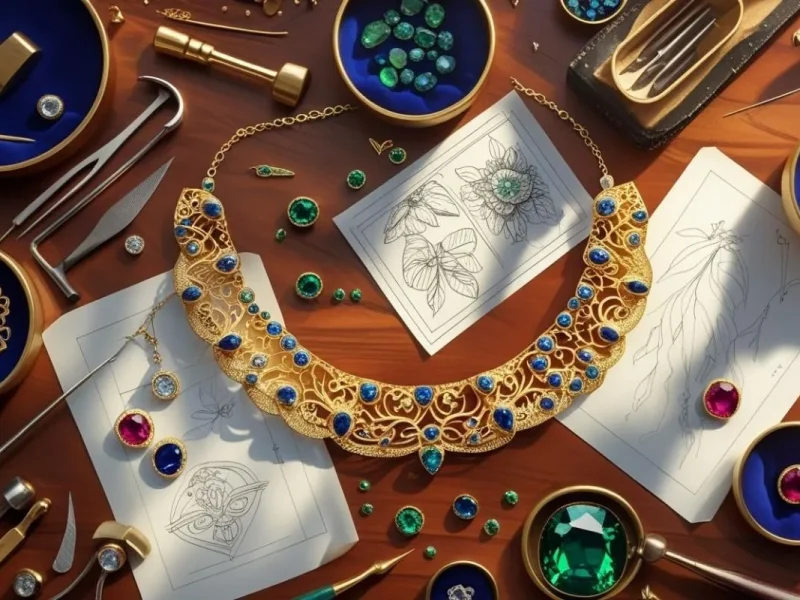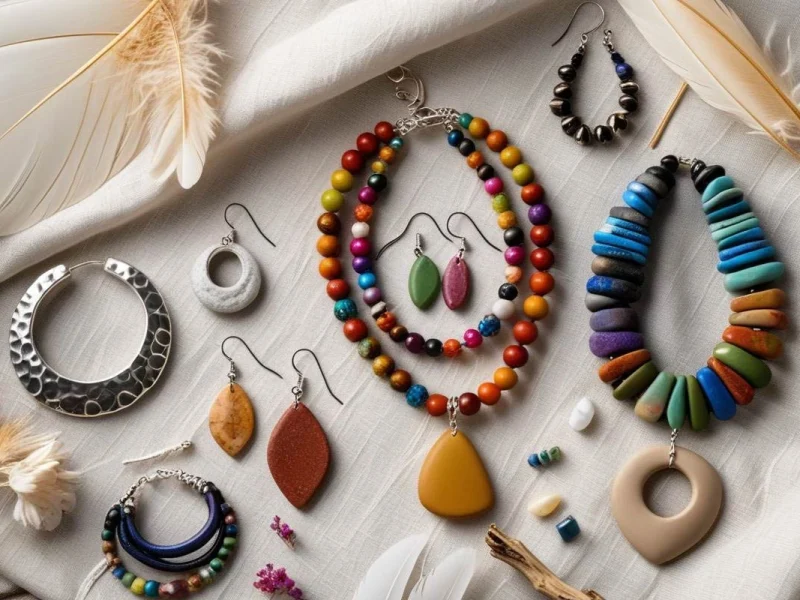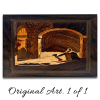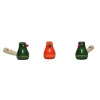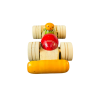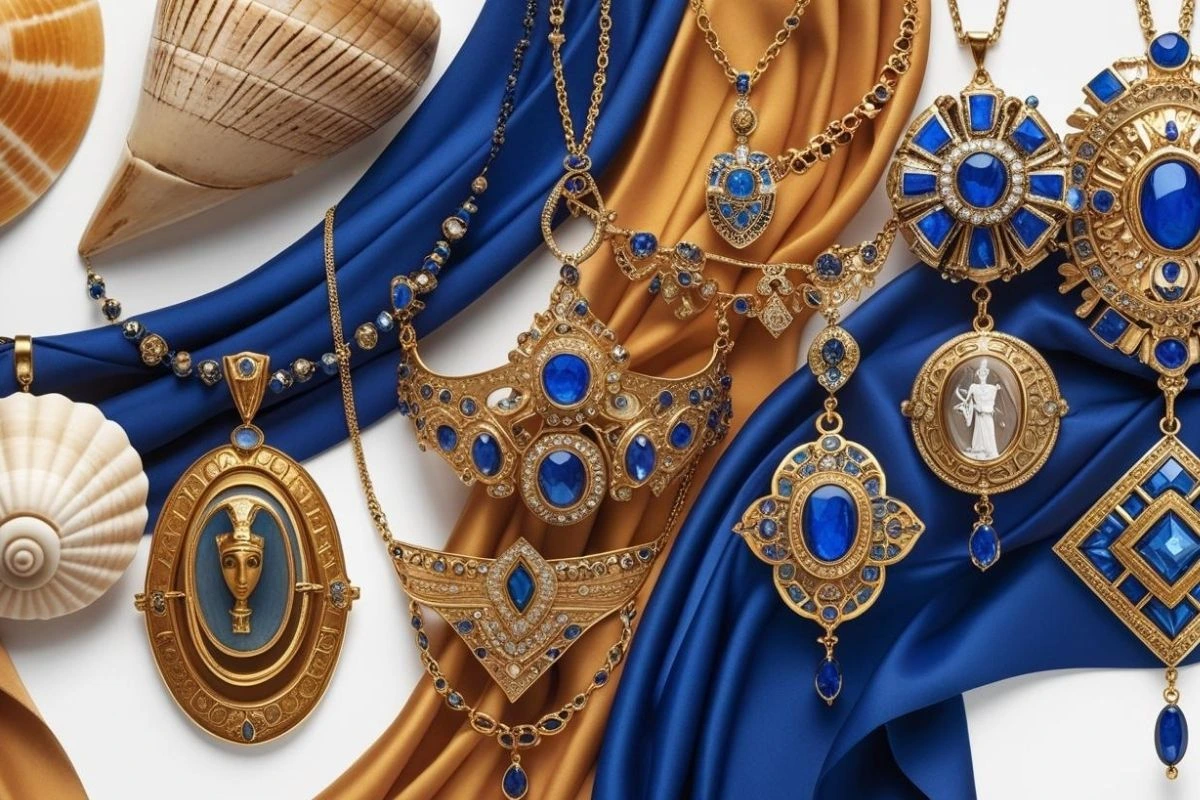
The Evolution of Handmade Jewellery: From Ancient Times to Modern Trends
The importance of jewellery as a symbol of status has never been at the accessory level. Its only meaning was self-expression and a marker of culture. One of the methods of making jewellery, this particular mode has a very rich existence of its own in human history. It all brings the touch, vision, and invention of the creator into every piece, combining art with self-expression. Handmade jewellery has worn a long life of thousands of years. From its simple forms made of natural materials to every elaborate piece of wearable art incorporating the heritage and the modernity.
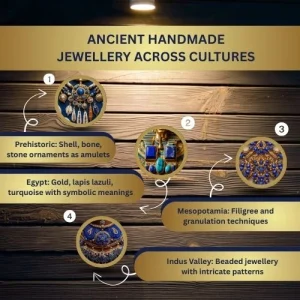
Ancient Origins
The oldest handwork jewellery dates back to more than 100,000 years ago. In which prehistoric humans made jewellery using shells, bones, stones and animal teeth. Such objects were not merely ornamental objects. They were supposedly protectors or even the pseudosocial embodiments, or spiritual amulets.
The art of jewellery in ancient Egypt attained a very high degree of perfection. Jewellers made necklaces, amulets and rings out of gold, lapis lazuli, turquoise and carnelian. Symbolic meaning was added to each piece. The gold was symbolic of the powerful forces of the sun, and the scarab beetle was considered a symbol of rebirth. This kind of art was done with such precision that most of this treasure is found today. That can help us have an insight into the art of the past.
Likewise, handmade jewels denoted status and wealth in Mesopotamia and the Indus Valley as well. Such civilisations used methods such as filigree and granulation, in which intricate designs have been used up to date.
The Middle Ages: faith, heraldry, and craft guilds
Jewellery became highly religious and symbolic in the Middle Ages in Europe. Crosses, saints and inscriptions were common in handmade objects. They were used as symbols of piety and as portrayers of wealth also. In nobility there was a significant use of intricate crowns, brooches and pendants using precious jewels. Artisans were developing other methods of jewellery making, such as enamelling and metal engraving.
Jewellery-making in this period became an accepted profession, formalised by the emergence of craft guilds. Artisans would teach their skill to others as apprentices, and the traditional methods of skill would thus be maintained. Every artisanal product was an expression of the skill of the maker and the cultural identity of the era.
The Renaissance and Beyond: Art Meets Ornament
Due to the Renaissance, art, culture, and creation revived, and handmade jewellery began to flourish. The exposure of the discoveries of the New World and the rise in trade led to the goldsmith. Jeweller having exposure to exotic materials such as pearls of the Persian Gulf and emeralds of Colombia. Designs became more detailed with classical elements combined with new methods.
In the 18th and 19th centuries, romanticism and naturalism influenced jewellery made by hand. It was also based on the motifs of flowers, animals, and mythological characters. Jewellery of the Victorian era was especially likely to be sentimental. Engraved lockets and brooches might have a portrait or a lock of hair of a loved one.
Turn to the 20th Century: Art Deco and Bohemian Freedom
The 20th century made the jewellery take such drastic changes. The artistic culture of Art Nouveau was based on the adoration of the organic flowing lines, whereas the Art Deco style relished in the use of bold geometrical patterns and rich luxurious materials. Jewellery was developed by hand and started to be a stage of artistic experimenting as jewellers started to mix ancient traditions of jewellery making with the contemporary style.
Later in the century the emergence of the bohemian and hippie movements brought an orientation towards individuality and self-expression. Homemade jewellery made of beads and natural stones with leather became the ones with meanings of freedom and counterculture.
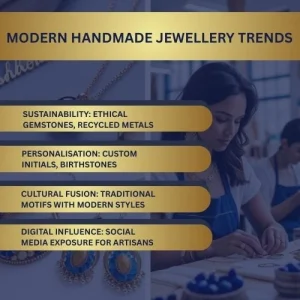
Current Trends: Sustainability, Personalisation, and Cultural Fusion
Hence, the handmade jewels have survived until today and are gaining momentum due to the rising demand for authenticity and crafting. The consumers of the modern world appreciate the uniqueness of a handmade work, as they understand that none of those are quite similar. Sustainability has been another major concern, and most artisans are working with recycled metal and ethically mined gemstones and greener production processes.
Personalisation is another trend definition. Initial necklaces, custom-made rings and birthstone jewellery enable the wearers to have their own story. The social media have also provided the independent jewellers with the world platform so they could mix the traditional cultural inspirations with the modern minimalistic or statement pieces or various experiments.
An Eternal Art
The history of handmade jewellery shows human ingenuity, cultural creativity and the human urge for beautiful things. Whether it is the shells of prehistoric times or the contemporary sustainable gold rings, every period has contributed its own bounty to this art form. The human connection of the craftsman to the one who wears his creation still exists, as before.
Wearing handmade jewellery is not just a way of decoration because it also means taking a part of history, arts, and personal symbolism in everyday life. Living in a rushed, mass-produced society, these treasures gently remind us that the most beautiful objects are usually those that were created and crafted with time, proficiency and a tale worth sharing.

